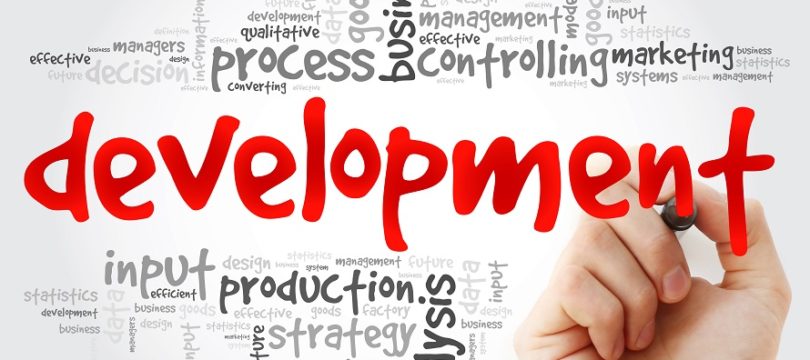
For many of our clients reading this blog, you may have been coached by one of the BRS team in the Life Styles Inventory (LSI) tool. The LSI tool is a great tool for understanding our thinking and behaviour and looking for self-improvement.
Self-development and personal growth is something I am passionate about and encouraged me to pursue a career in consulting where I could continually learn and grow.
Central to these sources is the journey of self-actualisation and how our sense of self-worth plays out in our thinking and behaviour. The goal of being self-actualised is fulfilment and healthy sense of self-worth. Abraham Maslow broadly defined self-actualisation as being:
- More authentic;
- Increased acceptance of self, of others, of nature;
- Increase in problem solving by removing self from the equation – not interested in being a hero;
- Greater freshness of appreciation and richness of emotional reaction;
- Increased identification with the human species;
- Genuine sense of equity and fairness;
- Increased creativity; and
- Balanced approach to performance and success. Performance is a product of “doing good”.
Along the journey I have found a couple of great sources which have helped me better understand what being self-actualised means. These include:
- The work on mindset by Abraham Maslow, Angela Duckworth, Carol Dweck and Brene Brown;
- My experience coaching people over 10 years either one on one or through workshops I have facilitated;
- The work on psychological development, self-esteem, growth mindset and high performance which underpins the Human Synergistics diagnostic tools I use for leadership coaching and developing high performing teams.
Shame and our thinking
Brene Brown in her work on vulnerability discusses the concept of shame and how shame impacts on our sense of self-worth. She defines shame as “an intensely painful feeling or experience of believing that we are flawed and therefore unworthy of love and belonging – something we’ve experienced, done, or failed to do makes us unworthy of connection”. According to the LSI model, this inner shame plays out in terms of inner fears and insecurities such as:
- A sense that when I fail, I am a failure (perfectionism);
- A sense that I am not good enough and need to prove myself (competitive);
- A need to be in control to be safe (power);
- A feeling that people will threaten me and I need to defend myself (oppositional);
- Attachment of my worth to what other people think of me (approval);
- Fear of failure that drives risk aversion (conventional);
- A lack of self-belief that makes me feel weak and that I need someone strong to protect me (dependent); and/or
- A lack of self-worth, self-love and self-acceptance (avoidance).
It is common place for leaders and organisations to use shame as a method of controlling people by adopting management strategies and implementing reinforcing systems that shame people, inhibit joy and create unproductive stress. Leaders and organisations often reinforce this shame by expecting people to:
- Work excessively to prove oneself at the expense of our own well-being;
- Never make a mistake;
- Work on things that don’t add value but create a perception of performance;
- Be obedient and need to do what they are told;
- Be liked by others and fit in;
- Comply with inefficient processes, KPI’s and systems;
- Keep things in steady state and not change.
Leaders often look to justify their own shame and inadvertently see their role as to control people often in the shadow of their own shame. For example, it is common for leaders who have shame of not being good enough to achieve at any cost and will drive staff excessively hard. They will expect staff to work long hours, send emails after hours and will reward those people who are seen as being across everything and delivering output, often at the expense of quality, client experience, creativity and outcomes.
Organisations also look to control staff and reinforce shame. Most organisations have rigid bureaucratic decision making which prevents decision making, creativity, empowerment and continuous learning. Staff are often punished for deviating from organisational norms and people are promoted and rewarded based on how they comply with expectations, metrics and systems. These expectations, metrics and systems are not always well thought out through rewarding aggressive, controlling, dependent and pleasant behaviour in staff rather than innovation, empowerment, learning and growth.
Leaders fear that if staff fail it reflects on the leader, and therefore staff need to be controlled. Few leaders allow people to be their authentic, creative and ethical self rather controlling their efforts for the fear that staff cannot be authentically trusted.
Shifting from shame to joy: building a humanistic and connected culture
I like to link the concept of self-actualisation and fulfillment to the concept of joy. For me joy is about balance and experiencing joy in five key areas (which are aligned to the four constructive styles defined by Human Synergistics). These include:
- The joy of achievement;
- The joy of being authentic self and being comfortable with oneself;
- The joy of making the world a better place through what I do;
- The joy of learning and growth and the freedom to try things and make mistakes; and
- The joy of love, friendship, teamwork, honesty, compassion and empathy.
The role of leaders is to eliminate shaming and create environments which are “humanistic” and support people to be their true authentic and creative selves. Leadership is enabling an environment where people feel safe to experience joy.
A great resource on this is the book “Firms of Endearment”. Sisodia, Wolfe and Sheth researched high performing organisations such as Ikea, Toyota and General Electric and found that the common theme between high performing organisations was that they had a “humanistic” culture whereby people (staff, customers, suppliers, communities, investors) where central to how they operated. The found that organisations which encouraged passion, purpose and a people focus achieved better long term sustainable performance than their competitors. People loved working for them, customers loved doing business with them and communities loved supporting them. They were connected on multiple levels to their staff, customers and communities.
Creating a “humanistic” culture
# 1 – Challenge perfectionism
Perfectionism is doing things that don’t add value but which create a perception of competence. Organisations are awash with perfectionism and this has a significant uplift of costs for business.
Back in the days when I was a Finance Manager, I worked on two separate mine-sites of comparable revenue, complexity and production rates. One company had low levels of perfectionism and we operated with a three-person finance team. The other was very perfectionistic and we operated with a twenty-five-person finance team.
In the second example you couldn’t get any decision made without a 30 slide power-point presentation, 100 emails and five meetings. The first example when I needed a decision made I just picked up the phone.
#2 – Encourage people to be themselves
Judgement is extremely unhealthy. Unfortunately, it is normal for us to be judgemental. It is easy to pass judgement on others as it helps deflect our own pain. However, judgement of others is a form of shaming people and likewise is criticism.
Effective leaders don’t judge. That doesn’t mean they tolerate poor behaviour; it just means they don’t shame people who behave poorly. Effective leaders deal with the behaviour they see and respond accordingly without judgement or shaming and also align on expectations and outcomes with staff up front.
Effective leaders also don’t judge themselves. They are accepting of the fact they will make mistakes and see mistakes as learning opportunities. They are always looking to learn and grow, rather than punish themselves.
#3 – Don’t punish people who threaten your security needs
It is a healthy thing if staff challenge you or the direction you are talking, as long as their intent is to make the business better. Too many leaders punish staff who make them look bad or challenge the status quo.
For example, it is very common in government to punish staff who upset or want to go down a different direction from the political officials. This creates a passive culture where staff feel they need to keep people happy rather than do what is best for the community in delivering value for money outcomes.
#4 – Discipline matters
Discipline is important and makes people feel safe. Discipline is the ability to do things you know are good for you in the long term (enabling long term satisfaction) over doing the things that give you short term pleasure.
Hold people accountable for being on time, following key processes and being planned/ intentional in their approach.
#5 – Allow people to make mistakes
This is the basis of a fixed mindset vs growth mindset. Fixed mindset fears mistakes and restricts learning as people feel unsafe to try new things and learn for fear of failure.
Having a growth mindset and allowing people to try things and fail is one of the most important elements in building high performance in your organisation or project.
#6 – Promote love
There is nothing better than walking into a room and everyone’s face lighting up excited to see you. That sense of comradery, connection and love between team mates is one of the most enjoyable things about working.
Celebrate your people. Always speak positively about your people. Use kind language. Express gratitude. Encourage teamwork. Have fun.
Positivity, gratitude and love 24/7.
#7 – Give people clear targets and clear expectations
People experience great joy from achieving and improving. Setting strategy, direction, measuring performance and providing clarity is a critical leadership skill.
However, balance is important. Making targets and expectations too tight drives a controlling, and aggressive culture. Making them too loose and vague creates a passive and unsafe culture.
The art is giving people enough direction to provide clarity, but at the same time enough freedom to enable a sense of empowerment and ownership. Align on the why and what and let your people figure out and drive the how.
#8 – Integrity first
We don’t all have to be Gandhi, but we can all make a difference. Organisations can do so much good including:
- Reduce unnecessary stress and removing perfectionism in the workplace;
- Providing work and training for people in disadvantaged situations or positions;
- Promoting diversity – a workplace which is diverse is so much more energetic, productive and enjoyable;
- Promoting family balance and time with children, families and communities;
- Improving the environment and promoting sustainability.
This requires leaders to transcend their ego and embrace the concept that the world “is not about me”. Some day we all grow old and we all die. The greatest thing we can do during our time on the planet is doing what is right in every moment with the people that matter to us.



